
The Polar Satellite Launch Vehicle (PSLV) is an expendable medium-lift launch vehicle designed and operated by the Indian Space Research Organisation (ISRO). It was developed to allow India to launch its Indian Remote Sensing (IRS) satellites into Sun-synchronous orbits, a service that was, until the advent of the PSLV in 1993, only commercially available from Russia. PSLV can also launch small size satellites into Geostationary Transfer Orbit (GTO).

Sriharikota is a barrier island off the Bay of Bengal coast located in the Shar Project settlement of Tirupati district in Andhra Pradesh, India. It houses the Satish Dhawan Space Centre, one of the two satellite launch centres in India. Indian Space Research Organisation (ISRO) launches satellites using multistage rockets such as the Polar Satellite Launch Vehicle and the Geosynchronous Satellite Launch Vehicle from Sriharikota. Sriharikota is selected by ISRO because of its proximity to the equator, it gives extra centripetal force from the rotation of Earth.
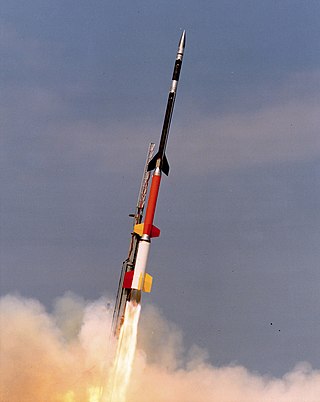
A sounding rocket or rocketsonde, sometimes called a research rocket or a suborbital rocket, is an instrument-carrying rocket designed to take measurements and perform scientific experiments during its sub-orbital flight. The rockets are used to launch instruments from 48 to 145 km above the surface of the Earth, the altitude generally between weather balloons and satellites; the maximum altitude for balloons is about 40 km and the minimum for satellites is approximately 121 km. Certain sounding rockets have an apogee between 1,000 and 1,500 km, such as the Black Brant X and XII, which is the maximum apogee of their class. Sounding rockets often use military surplus rocket motors. NASA routinely flies the Terrier Mk 70 boosted Improved Orion, lifting 270–450-kg (600–1,000-pound) payloads into the exoatmospheric region between 97 and 201 km.

The Vikram Sarabhai Space Centre (VSSC) is a major space research centre of the Indian Space Research Organisation (ISRO), focusing on rocket and space vehicles for India's satellite programme. It is located in Trivandrum, in the Indian state of Kerala.
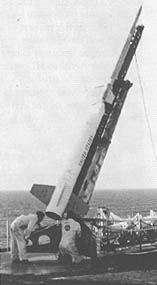
The Nike Apache, also known as Argo B-13, was a two-stage sounding rocket developed by Aerolab, later Atlantic Research, for use by the United States Air Force and NASA. It became the standard NASA sounding rocket and was launched over 600 times between 1961 and 1978.

Satish Dhawan Space Centre – SDSC, is the primary spaceport of the Indian Space Research Organisation (ISRO), located in Sriharikota, Andhra Pradesh.
Rohini is a series of satellites launched by the Indian Space Research Organisation (ISRO). The Rohini series consisted of four satellites, each of which was launched by the Satellite Launch Vehicle (SLV) and three of which made it successfully to orbit. The series were mostly experimental satellites, with the first launch being in 1979. There was an earlier series of ISRO sounding rockets with the same name, first launched 1967.
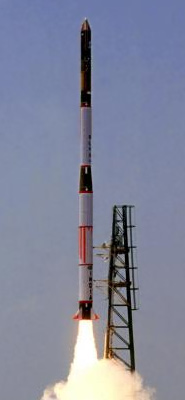
The Satellite Launch Vehicle or SLV was a small-lift launch vehicle project started in the early 1970s by the Indian Space Research Organisation to develop the technology needed to launch satellites. SLV was intended to reach a height of 400 kilometres (250 mi) and carry a payload of 40 kg (88 lb). The first experimental flight of SLV, in August 1979, was a failure. The first successful launch took place on 18 July 1980.

The Augmented Satellite Launch Vehicle or Advanced Satellite Launch Vehicle was a small-lift launch vehicle five-stage solid-fuel rocket developed by the Indian Space Research Organisation (ISRO) to place 150 kg satellites into LEO. This project was started by India during the early 1980s to develop technologies needed for a payload to be placed into a geostationary orbit. Its design was based on Satellite Launch Vehicle. ISRO did not have sufficient funds for both the Polar Satellite Launch Vehicle programme and the ASLV programme at the same time and the ASLV programme was terminated after the initial developmental flights. The payloads of ASLV were Stretched Rohini Satellites.
The economy of Thiruvananthapuram, capital of the Indian state of Kerala, mostly consists of tourism and leisure, information technology, rubber plantations, coffee production, tea production, and education. There are many manufacturers, such as Travancore Titanium Products Ltd and English Indian Clays.
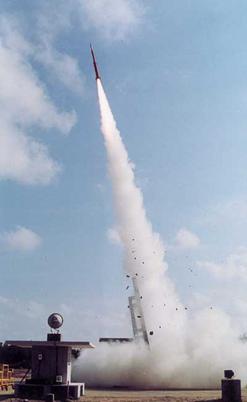
Thumba Equatorial Rocket Launching Station (TERLS) is an Indian rocket launching site established on 21 November 1963. Operated by the Indian Space Research Organisation (ISRO), it is located in Thumba, Thiruvananthapuram, which is near the southwestern tip of mainland India, very close to Earth's magnetic equator. It is currently used by ISRO for launching sounding rockets.
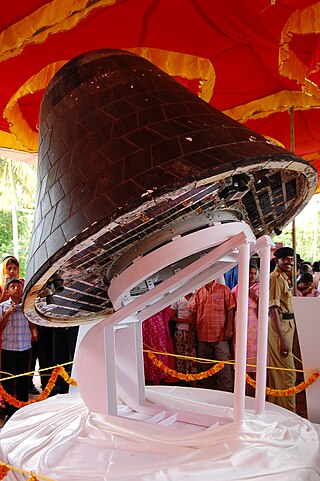
The Space Capsule Recovery Experiment is an Indian experimental spacecraft which was launched at 03:53 UTC on January 10, 2007, from Sriharikota by the Indian Space Research Organisation (ISRO). The launch was conducted using the C7 launch of the PSLV rocket, along with three other satellites. It remained in orbit for 12 days before re-entering the Earth's atmosphere and splashing down into the Bay of Bengal at 04:16 UTC on January 22.
The Indian National Committee for Space Research (INCOSPAR) was established by India's first prime minister Pandit Jawaharlal Nehru under the Department of Atomic Energy (DAE) in 1962, on the suggestion of the scientist Dr. Vikram Sarabhai, recognising the need in space research. It committed to formulate the Indian Space Programme. At the time, the committee was part of the Tata Institute of Fundamental Research. The committee took over the responsibilities of the Department of Atomic Energy in space science and research. The then director of the DAE, Homi Bhabha, was instrumental in creation of the committee.

Reusable Launch Vehicle–Technology Demonstration Programme is a series of technology demonstration missions that has been conceived by the Indian Space Research Organisation (ISRO) as a first step towards realising a Two Stage To Orbit (TSTO) reusable launch vehicle, in which the second stage is a spaceplane.

Rohini is a series of sounding rockets developed by the Indian Space Research Organisation (ISRO) for meteorological and atmospheric study. These sounding rockets are capable of carrying payloads of 2 to 200 kilograms between altitudes of 100 to 500 kilometres. The ISRO currently uses RH-200, RH-300,Mk-II, RH-560 Mk-II and RH-560 Mk-III rockets, which are launched from the Thumba Equatorial Rocket Launching Station (TERLS) in Thumba and the Satish Dhawan Space Centre in Sriharikota.
Praful D. Bhavsar was an Indian space scientist who held several major positions in the Indian Space program including the Project Scientist for the first rocket launch into space from Indian soil on 21 November 1963. In 1986, he retired from the position of Director, Space Applications Centre of the Indian Space Research Organization (ISRO) and the Director, Indian Remote Sensing Satellite Utilization Program.

AgniKul Cosmos Private Limited is an Indian aerospace manufacturer based in National Centre for Combustion Research and Development (NCCRD) of IIT Madras, Chennai. The start up aims to develop and launch its own small-lift launch vehicle such as the Agnibaan, capable of placing 100 kg (220 lb) payload into a 700 km (430 mi) orbit. The first commercial launch was expected in 2022. However, no launch happened in that year. The first suborbital mission will be conducted on 22 March 2024. This did not happen either. The company tried twice to launch its suborbital rocket in March and April but postponed due to technical issues.

India's Space Industry is predominantly driven by the national Indian Space Research Organisation (ISRO). The industry includes over 500 private suppliers and other various bodies of the Department of Space in all commercial, research and arbitrary regards. There are relatively few independent private agencies, though they have been gaining an increased role since the start of the 21st century. In 2023, the space industry of India accounted for $9 billion or 2%-3% of the global space industry and employed more than 45,000 people.
Kulasekarapattinam Spaceport is the second spaceport of the Indian Space Research Organisation (ISRO), located in Kulasekarapattinam, a coastal village in Thoothukudi district of Tamil Nadu, India. The facility is being constructed over 2,350 acres. As of September 2023, more than 90% of land has been acquired and the groundbreaking was done on 28 February 2024.
There are several Indian Space Research Organisation (ISRO) facilities all over India. ISRO headquarters in Bangalore provides overall direction for the organization. There are more than twenty facilities which support ISRO.

















